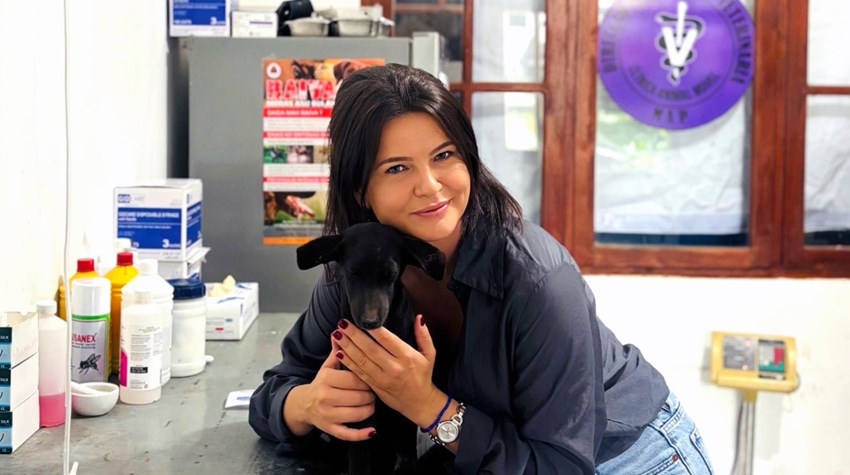In March 2024, the Government of Timor-Leste reported its first-ever confirmed fatal human case of rabies to the World Health Organization (WHO), following a dog bite.
Rabies poses a serious public health problem—without proper post-bite treatment, rabies is fatal to humans and other mammals. The most cost-effective and practical way to reduce the impact on humans and animals is through mass vaccination to prevent the transmission in dogs, being the primary reservoir for rabies in Timor-Leste.
With rabies continuing to spread across municipalities bordering Indonesia following the first confirmed case, the Government of Timor-Leste has partnered with the Australian Government’s Department of Agriculture, Fisheries and Forestry (DAFF) and Department of Foreign Affairs and Trade (DFAT) to combat this neglected topical zoonotic disease.
Building awareness and protecting communities
As part of the Australian government’s response to the rabies outbreak, RedR Australia roster member Rebeca has been working with Timor-Leste's Ministry of Agriculture, Livestock, Fisheries and Forestry (MALFF) and Ministry of Health (MoH) to increase community awareness of the disease in Timor-Leste and advocate for increased animal vaccination rates throughout the country.
Funded by DFAT and deployed through DAFF as a public health risk communication and community engagement (RCCE) specialist, Rebeca has provided critical support to the Timor-Leste government to develop a multi-sectoral communications and engagement strategy, aligning efforts across key stakeholders.
Rebeca also worked to action parts of the strategy, including developing contextually appropriate mass media communications, social media messaging, podcast episodes and public health awareness campaigns targeting specific groups including children, youth (who are the most affected subpopulation) and people with disabilities.

Rebeca with Mr. Franco da Costa, executive producer and host of the East Tales podcast. Rebeca supported participation in established Timorese podcasts, such as East Tales, and facilitated discussions in Tetun and English on rabies awareness, featuring government representatives. Photo by East Tales.
“Since rabies was previously unknown to the population, there was a widespread lack of awareness about its transmission and symptoms, and the urgency for life-saving post-exposure prophylaxis,” said Rebeca.
“Many communities were unfamiliar with the concept of vaccinating dogs as a preventive measure or the necessity of reporting dog bite events, which is critical for identifying and containing the spread of dog-mediated rabies and ensuring timely access to treatment for bite victims.”
Given these factors, the strategy prioritised foundational awareness building—addressing cultural beliefs and building trust in public health responses.
“The recent emergence of rabies in Timor-Leste means that our work was not just about responding to an outbreak but also about establishing new public health norms,” said Rebeca. “This includes dog vaccination as a cost-effective public health intervention, as well as bite reporting and early medical intervention to protect communities from this disease.”
A coordinated approach
Given the high human health risk associated with rabies, Rebeca worked with a wide range of stakeholders to develop the strategy and bring it to life.
Key stakeholders included the Government of Timor-Leste's MALFF; MoH; and Ministry of Education; the Australian government’s DAFF and DFAT; the United Nations’ WHO; and other international organisations.
Rebeca stressed that inter-agency coordination was essential in developing an effective rabies communication strategy.
“Our strategy aligns with the One Health approach, which recognises that human, animal and environmental health are interconnected and require collaborative efforts to tackle health threats like rabies,” said Rebeca.
By collaborating with multiple partners, the strategy has the potential to enhance community awareness of rabies and support long-term rabies elimination efforts in Timor-Leste.

Rebeca (bottom right) next to Mr. Joaozito dos Santos, Executive Director of Ra'es Hadomi Timor Oan (RHTO)—the National Disabled People’s Organisation of Timor-Leste—along with RHTO staff, following a workshop on inclusive rabies risk communication for people with disabilities.
Building awareness through strong communities
Given that dog mediated rabies was previously unknown in Timor-Leste, the communications and engagement strategy needed to build on the existing strengths in communities.
“Communities in Timor-Leste share a deep sense of solidarity, with strong family ties and village networks,” said Rebeca. “This helps facilitate the spread of information when trusted leaders endorse key messages about rabies awareness, prevention and post-bite care.”
Rebeca also noted that communities show trust in the MoH for human health concerns and MALFF for animal health matters.
Building on this trust, the strategy aims to reinforce confidence in mass animal-vaccination campaigns and the need for post-bite management to control rabies in Timor-Leste.
Learn more about the work of RedR Australia’s roster members.


